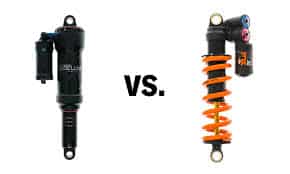Regarding automotive suspension systems the shock absorber is one of the most crucial components in automotive suspension systems.
These devices play a vital role in ensuring a comfortable and safe ride by controlling the vertical movement of your vehicle.
Two primary types of shock absorber systems exist: coil springs and air suspension. Let’s delve into the key differences between these two systems to help you understand which best suits your needs.
What Are Coil Springs?
Coil springs are essential components in automotive suspension systems. They are typically made of tempered steel wire wound into a spiral shape. Their primary function is to absorb and store energy from road bumps, providing a smoother ride.
When a vehicle encounters a bump, the coil spring compresses, absorbing the impact. As the wheel rebounds, the spring extends, releasing the stored energy. This helps to maintain vehicle stability and control, especially on uneven surfaces.
What is Air Suspension?
Air suspension is a vehicle suspension system that replaces traditional steel springs with air-filled bladders.
These bladders are inflated by an onboard compressor, allowing for adjustable ride height and stiffness. This technology offers a smoother, more comfortable ride, especially on uneven roads.
Additionally, air suspension can help maintain a level vehicle posture, even when carrying heavy loads.
Differences Between Coil Springs and Air Suspension
Coil Springs and Air Suspension are two primary methods used to support the weight of a vehicle and provide cushioning for a smooth ride.
While both serve the same purpose, they operate on fundamentally different principles. Here are some key differences:
- Composition and Structure:
1. Coil Springs: These are made of helical steel coils that are compressed and extended to absorb and release energy during vehicle movement.
2. Air Suspension: This system uses air-filled bladders or bellows controlled by an air compressor.
- Ride Quality:
1. Coil Springs: Offer a more traditional, fixed ride height and feel. They provide a good balance of comfort and performance.
2. Air Suspension: Provides a more customisable and adjustable ride. It can be electronically controlled to adjust the vehicle’s height and stiffness, offering a smoother and more luxurious ride.
- Adjustability:
1. Coil Springs: Generally do not offer adjustability in ride height or stiffness.
2. Air Suspension: Allows for adjustments to ride height, stiffness, and even individual wheel settings, providing greater control and flexibility.
- Load Capacity:
1. Coil Springs: Typically, the spring rate determines a fixed load capacity.
2. Air Suspension: Can handle varying loads more effectively by adjusting air pressure in the bladders.
- Cost and Maintenance:
1. Coil Springs: Generally less expensive to purchase and maintain.
2. Air Suspension: Typically more expensive to purchase and maintain due to its complexity, the need for regular air pressure checks, and potential compressor replacements.
While both coil springs and air suspension systems serve the same purpose, they offer distinct advantages and disadvantages. The best choice for your vehicle depends on factors such as desired ride quality, load capacity, adjustability requirements, and your budget.


